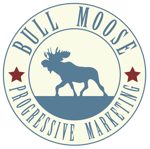
If a request for a heritage tourism development grant is in your future, relax and remember that a marketing plan can easily help you map out all the right information needed for your grant proposal. Here are a few tips:
- Money is out there in a variety of heritage tourism development grants, but there is competition. To successfully obtain grants, be prepared.
- Preparation means having a marketing strategy that shows grantors that your community has collaborative efforts in mind for heritage tourism, and your plans look past one grant and one project. Your marketing strategy encourages and develops new opportunities.
- New opportunities impact more than one area for heritage tourism. A complete marketing strategy will show how dollars spent will improve your area, region and the state.
According to the Department of Conservation and Natural Resources, tourists in Pennsylvania’s Heritage Areas spent about $2 billion on goods and services related to “heritage-related attractions.” Funding is out there for the billion-dollar heritage tourism industry, but that doesn’t mean funding is handed out easily.
When we at Bull Moose Marketing partner with clients looking for major multi-million dollar funding, our marketing strategies are an integral part of the request to fund heritage tourism marketing.
The marketing plan outlines the goals, objectives and strategies that heritage tourism marketing organizations are going to use to connect collaborative efforts to, for example, build a venue and show its return on investment and sustainability.
In other words, no one can expect to succeed on the Field of Dreams promise that “if we build it, they will come.” A proposal has to be an all inclusive plan that supports why people will support a new venue and how it will bring in jobs, new residents and become a profitable project that can lead to additional profitable projects that will provide a return on investment.
Bill Callahan, community preservation coordinator for Western Pennsylvania, has been involved in grants and funding for 32 years, and he says planning is critical to successful funding of projects. “Money is tight. You have to have a clear, practical plan when you apply for funds, and it has to be vetted,” he advised. Callahan has seen many organizations perfectly prepared with grant submissions, and he’s seen others who are unprepared. “Organizations need to understand the process and what the funders are looking for,” he said.
Before organizations apply for grants, Callahan suggests making an appointment to ensure the requirements are understood. “Don’t be shy. Call, make an appointment and ask questions, but don’t do it a week or a day before the application is due,” he said.
At Bull Moose Marketing, we craft professional marketing strategies that involve expertise, teamwork, collaboration and follow-through. To achieve success, we check all the boxes; Callahan notes that a successful application needs to show how the project impacts the public and the region.
Experts agree on that. A Forbes article, The Six Key Ingredients Of A Successful Grant Proposal, discusses the community impact of the proposal as one of the most important ingredients.
Another key component is conveying all the information in a well-written story that’s meaningful and inspiring. “Writing is an art and a science,” Callahan said. “The writing is important.” Don’t skimp on bringing in experienced writing and production talent to craft your content; the payoff will be an audience that’s eager to read, watch, and listen to more of your stories.
Establishing relationships with funders is another noteworthy ingredient of successful grant proposals. John R. Phillips, President/CEO of the Oil Region Alliance, endorses that idea. He has been managing the Oil Region State and National Heritage Area since 2005. Phillips believes that building relationships is meaningful and helps those looking for grants to know what funders are expecting and how to meet expectations. “There’s a lot of competition for funding,” he said.
Showing that a grant will help an entire region requires collaboration skills, and Bull Moose Marketing knows how to create an environment where organizations work together. Our presentation, 10 Trends in Rural Communities, outlines how rural communities can identify and share marketing opportunities and work together to do it.
In another example, Bull Moose Marketing is currently involved in a marketing plan for heritage tourism marketing that promotes the entire Pennsylvania Great Lakes Region with a collaboration of Erie, Crawford, Venango and Mercer county resources. The collaboration covers industry, consumers, tourism and lifestyle. All of that is applicable to crafting marketing plans that can assist in accessing heritage tourism marketing dollars.
The importance of doing everything right to access grants is critical in light of the competition. One big test Callahan mentioned is the need to prove applicants can raise matching funds (if needed), and it’s an important component to approval. With all things considered, he added that only about 25 percent of grant applications will be approved.
Choosing experienced teams who know how to compose and use marketing plans in the grant application process for heritage tourism development can ease a lot of stress. A strategy can seem complicated, at times, if you’ve never created one, but a team with expertise can facilitate the application process.




